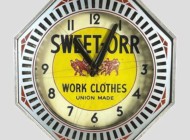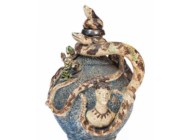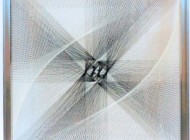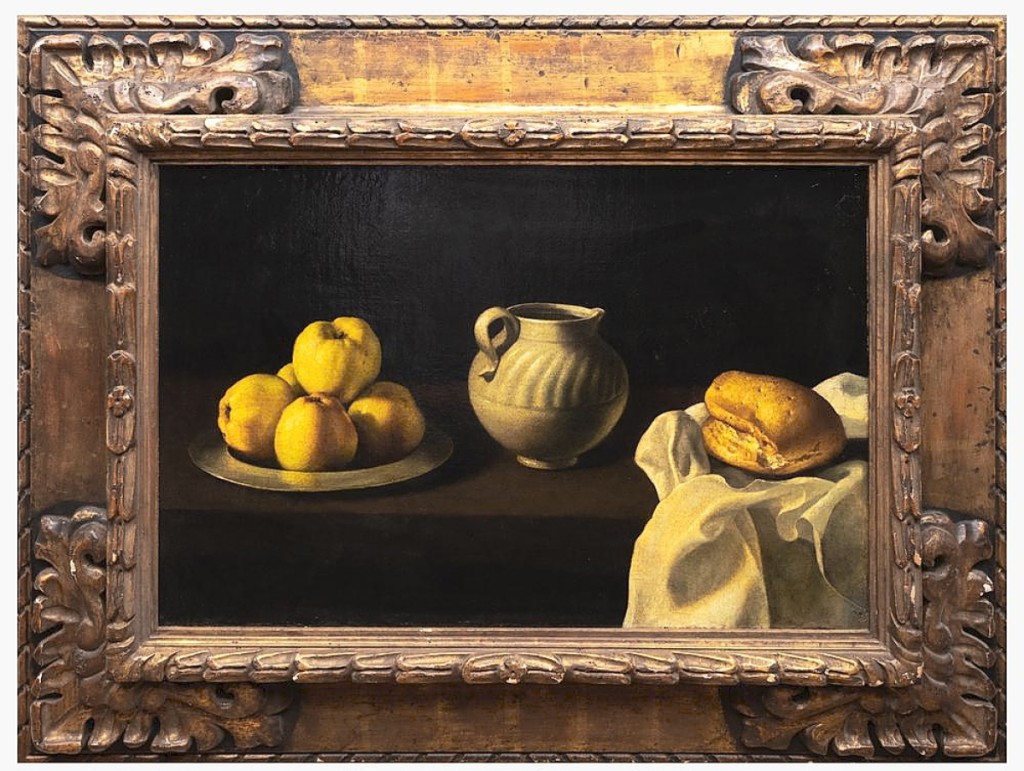
The sale’s top lot was a $688,800 surprise when a still life cataloged as the School of Juan de Zurbarán sold to a trade buyer. Six phone bidders pushed the work above its $2/4,000 estimate.
Review by Greg Smith, Photos Courtesy Stair Galleries
HUDSON, N.Y. – Much like those colonists who arrived to the East Coast in the Seventeenth Century and ventured up the Hudson River, purveyors of the fine and decorative arts from Europe have found a stateside home in Hudson. Stair Galleries has been having a field day with the European style and the auction house’s October 20-21 sale was yet another example.
The first day was devoted to 226 lots from the collection of Gayfryd Steinberg who “once ruled New York’s ’80s Nouvelle Society with her late husband, corporate raider Saul Steinberg,” according to the New York Post in a July 2021 article on the sale of her Upper East Side home. The deaccession draws parallels to a 2001 Vanity Fair profile on the former couple titled “Vanished Opulence,” which followed a financial downturn for Saul, the sale of the couple’s 34-room triplex on Park Avenue at 71st Street and an auction at Sotheby’s where the couple sold their porcelain, silver and more. A discerning collector, “The auction had been excruciating for Gayfryd,” the Vanity Fair article said. The Post loops us back to the present: “She is now married to Vanity Fair writer Michael Shnayerson [not the writer of the 2001 article], hiking in the Swiss Alps, looking as glamorous as ever.” Stair’s director of decorative arts, Muffie Cunningham, who worked the Sotheby’s sale in 2001, said the consignor was elated this round. Certainly, collectors seemed to have a great time as they bid the gross total up to $774,516.
Steinberg’s collection was led at $47,970 by two Regency globes – one celestial and circa 1800, the other terrestrial and circa 1807 – on mahogany stands by William and Thomas Bardin.
“The geography of the terrestrial globe is…largely taken from the work of Aaron Arrowsmith, the most accomplished mapmaker of the early Nineteenth Century,” the catalog reads. “Arrowsmith’s North American geography greatly influenced Lewis and Clark and Bardin shows the continent based on Arrowsmith on the eve of the publication of the discoveries of these great explorers. The discoveries of Hearne, Mackenzie, Cook and other great explorers of the preceding decades are also shown in detail.”
The celestial globe marked the position of nearly 6,000 stars, clusters, nebulae and more. The auction house said a similar pair is in the collection of the Smithsonian. Cunningham said interest came from both private buyers and the trade, with the member of the former succeeding.
Taking $39,360 each were two Greek black-figure pottery works that well surpassed their $2,500 high estimates. Both were included in the 1985 Catalogue of the Collection for the Beverly Hills-based Barakat Gallery.
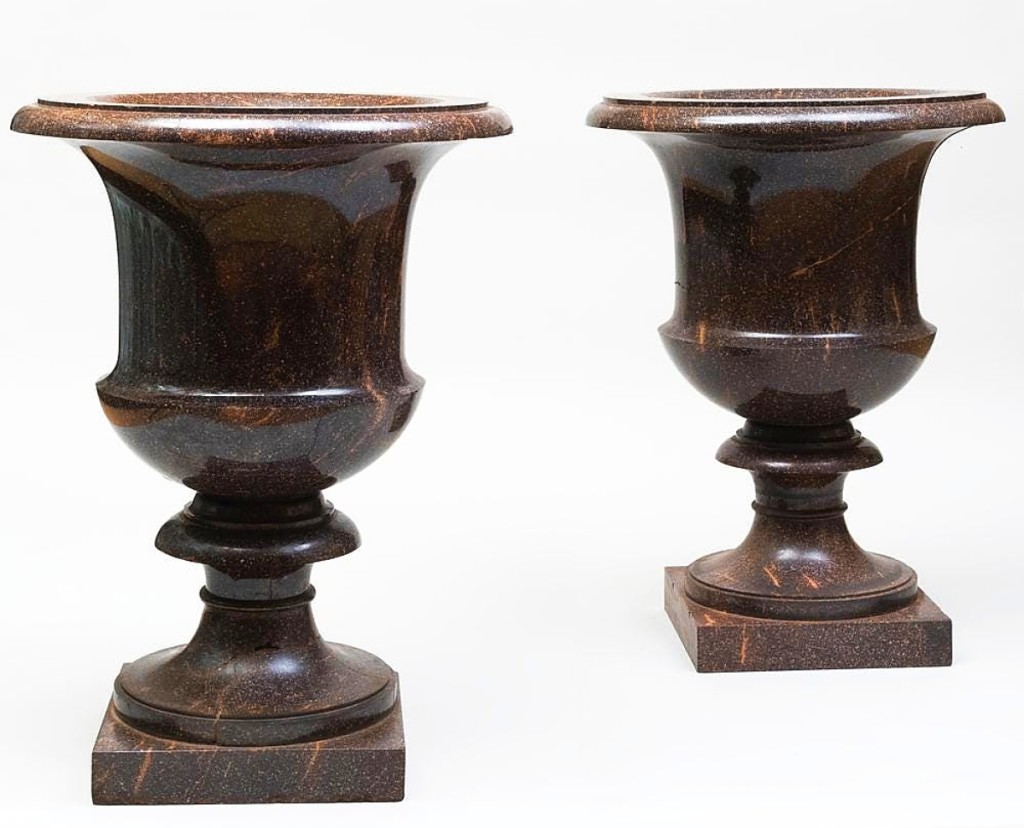
“In my four decades in this business, I have never seen this scale, ever,” Cunningham said of the pair of 27½-inch-high Porphyry urns consigned from a Kent collector who found them in a Ridgefield, Conn., consignment shop in the 1970s. The Swedish royal family found a vein of the rare mineral in the late Eighteenth Century and proceeded to use it in furnishing their estates and for official gifts. The pair of Porphyry urns went out at $88,560.
If bidders were looking for furniture, a standout piece was a Victorian rosewood specimen table with a top inset with wood and agate. It rose on a spiral-stem base and sold for $15,990. A George IV rosewood and parcel-gilt library table featured lions paw feet and a top with inlaid brass banding along the open niches. For $11,070, the table came with a set of leatherbound books. Settling in at $8,960 was a Regency carved oak and caned armchair in the manner of British collector, designer and writer Thomas Hope. “The above offered chair is an amalgam of several styles, including the overall klismos shape with a classical foliate scrolled back splat and Regency reeded legs,” the auction house wrote.
Steinberg’s eye for silver never waned. An assembled five-piece George III coffee and tea set would sell for $7,380. The set featured marks for late Eighteenth Century London smiths William Vincent and John Wakelin & William Taylor. Another assembled set with pleasing proportions was retailed by James Robinson and sold for $5,535.
The sale’s second day – which produced a total just shy of $2 million – was electrified when a Baroque still life painting with a $2/4,000 estimate shot to $688,800. Cataloged as the School of Juan de Zurbarán, the still life with apples, jug and bread had the telltale dramatic chiaroscuro lighting of a Zurbarán still life – but which Zurburán was it? Francisco, the father, who enjoyed a long career, or Juan, the son, who died by plague at age 29? The uncertainty seems to have stumped a few scholars, including the famed Paul Rosenberg. A Rosenberg label on the back lists the artist only as Zurbarán. There were six phone bidders on it and the painting sold to a trade buyer who likely felt confident enough to make the call.
Molded and shaped rocks made up a surprising number of the sale’s top lots. Rising to $88,560 was a pair of Swedish Porphyry urns measuring 37½ inches high. The urns were designed by Louis Masreliez, an artist and decorator of the late Gustavian period. The igneous rock Porphyry is prized for its natural inclusion of crystals and has been a favorite of Swedish, Russian and Egyptian royalty for centuries. Napoleon famously tried to locate the Egyptian vein of Porphyry but failed. The royals of Sweden were fortunate to discover a mine in Älvdalen, Sweden, in the late Eighteenth Century and much like the French kings who lorded over the limestone mines that produced their beloved Gogottes, the Swedish Royal Family laid dominion over the Porphyry mine and would create official gifts and furnish the family’s residences from its heart.
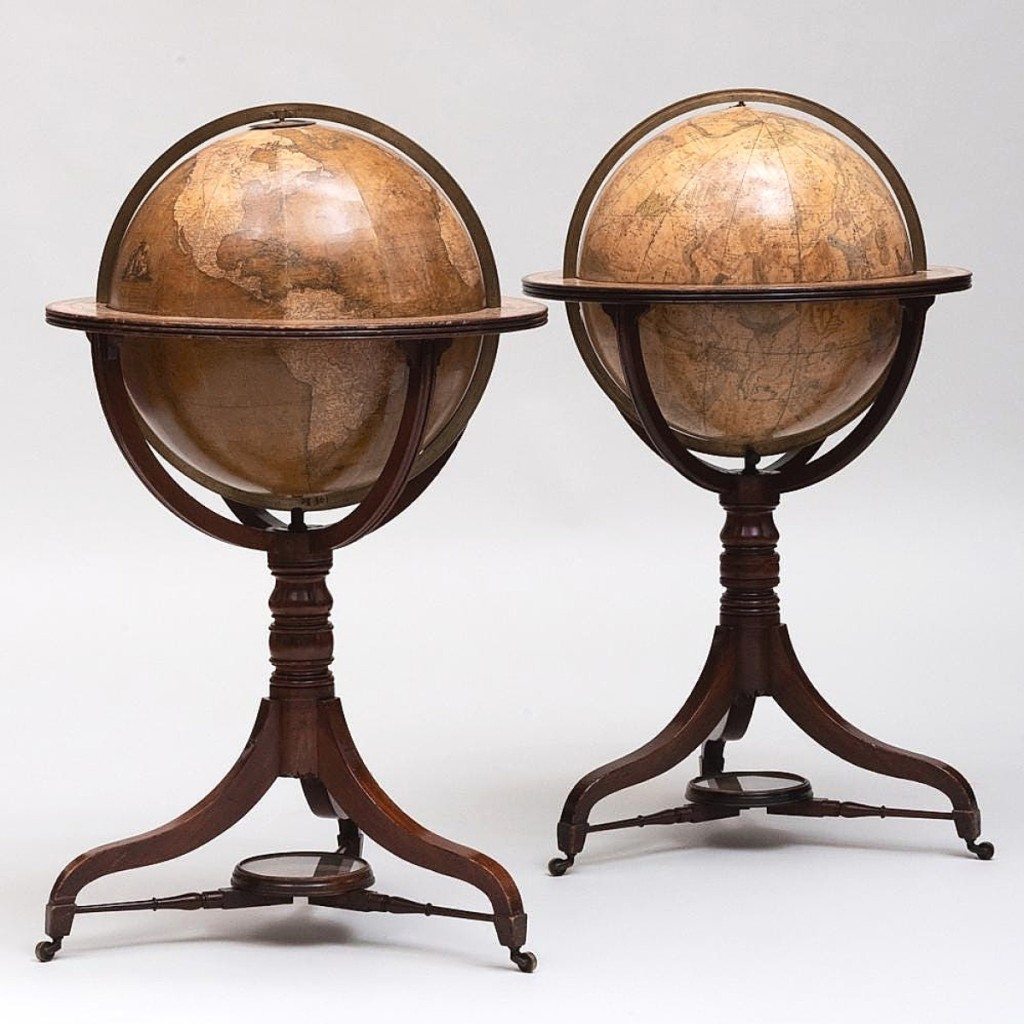
The top result from the Steinberg collection was a lot of two globes by London maker William and Thomas M. Bardin. The celestial globe dated to 1800 where the terrestrial globe dated to 1807 and included the latest discoveries and communications from surveys to the year 1799 by Capt. Cook. A similar pairing resides in the Smithsonian. On mahogany stands, the duo sold for $47,970.
In her 40 years of working with decorative arts, Cunningham said she has never before seen the scale of these urns. “The consignor was a collector from Kent, Conn.,” she recalled, “and they had purchased these from an upscale consignment shop in Ridgefield in the 1970s. They just thought they got a great pair of marble urns. I do think they were royal, made for a royal palace – one of the three in Sweden – and who knows how they got to the United States. These are the mysteries we can never figure out.”
Two stone-inlaid table tops flew from their estimates. An agate inlaid panel stretched over 13 feet long and sold for $32,000. It came from the same estate as the Porphyry urns and Cunningham said some bidders speculated it may be ancient. Right behind was a nearly 8-foot-long Roman marble mosaic panel with a pleasing warm palette of black, brown, cream, gray and white tesserae that brought $24,600. Also among the ancients was a pair of Italian carved marble Trapezophoroi that brought $38,130. With winged lions and abundant cornucopias, the Trapezophoroi may have originally formed the base of a table with a top like the two previously mentioned.
Continental pottery was in high demand as the French and Germans battled it out. Bidders took the French example, a painted porcelain two-handled ecuelle and cover by Du Paquier to $51,660. An Asian figure sits atop the cover as images of stags in a forest surround the body. The Germans found their strength in Nuremberg Delft and came with quantity from the collection of Georg Tillman. A $24,600 result was found for a Georg Friedrich Grebner polychromed charger dated 1730 depicting Martin Luther and Johann, the duke of Saxony. Another Nuremberg Delft charger with a classical scene, dated 1723, sold for $15,990. The largest surprise from the Tillman collection was a German pewter-mounted faience tankard that wrapped around the $1,200 high estimate to $17,220.
On the participation in the sales, Cunningham said it broke down to 60 percent American, 40 percent abroad.
All prices reported include buyer’s premium. For more information, 518-751-1000 or www.stairgalleries.com.













.jpg)


.jpg)







